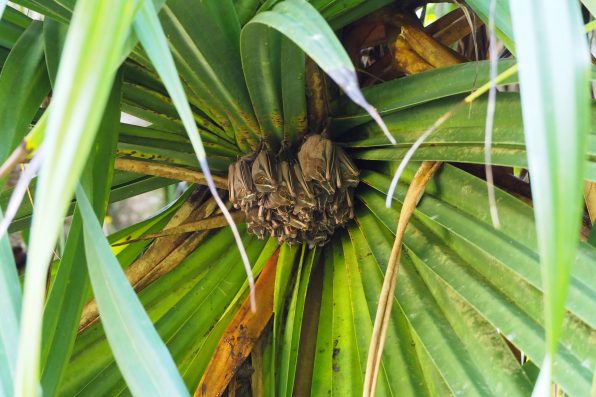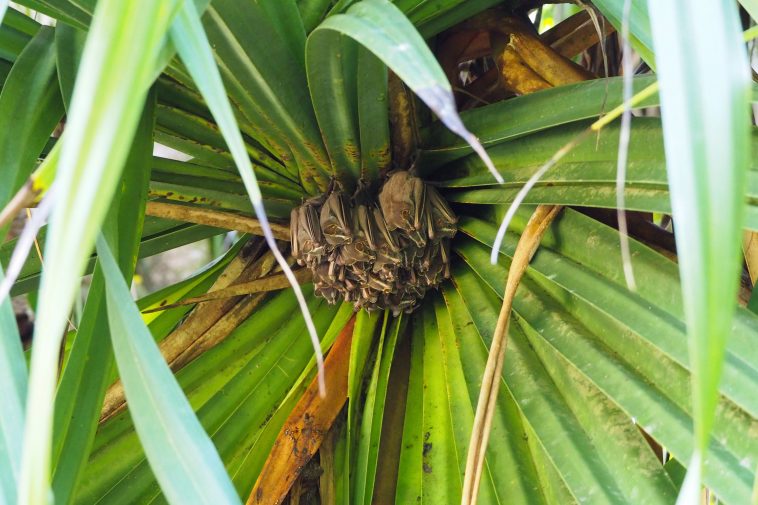Bats have amazing abilities—they can fly at high speeds and use echolocation to accurately determine the shape, size, and texture of objects in their environment.
In general, most bats seek out caves, crevices, and trees for shelter. But some bat species living in tropical forests can actually build their own homes out of leaves.
Over 20 species of bat have been found to make tent-like structures for shelter. They are found in the lowland rainforests of Central and South America.
The male bats might construct a roost during breeding season to attract mates. A group of bats might team up to produce a family-sized tent. Or, a single bat will also set up camp by themselves.
The tents are made by chewing around the veins and stem of each leaf until it collapses in on itself. There are various styles of tent that depend on the leaves that are used and the bat’s chewing pattern.
One of the most notable tent-making bats, the Honduran white bat, a species native to Central America, only uses the broad leaves of heliconias to make tents that are shaped like upside-down boats.
As many as 15 of them will crowd together in a tent. The tent’s leaves can be easily shaken, serving as alarm bells when predators like snakes, owls, and opossums touch them. The signal allows the bats to escape danger.
Honduran white bats are among the tiniest fruit-eating bats in the world, with a wingspan of just under four inches and weighing about the same as a teaspoon and a half of sugar. They have fluffy, white coats that resemble cotton balls and bright yellow ears and noses.
According to a bat biologist and professor at the University of Costa Rica named Bernal Rodriguez, these bats are the only mammals that possess an accumulation of carotenoid pigment, which is the chemical that contributes to the color of their ears and noses.

Sign up for Chip Chick’s newsletter and get stories like this delivered to your inbox.


